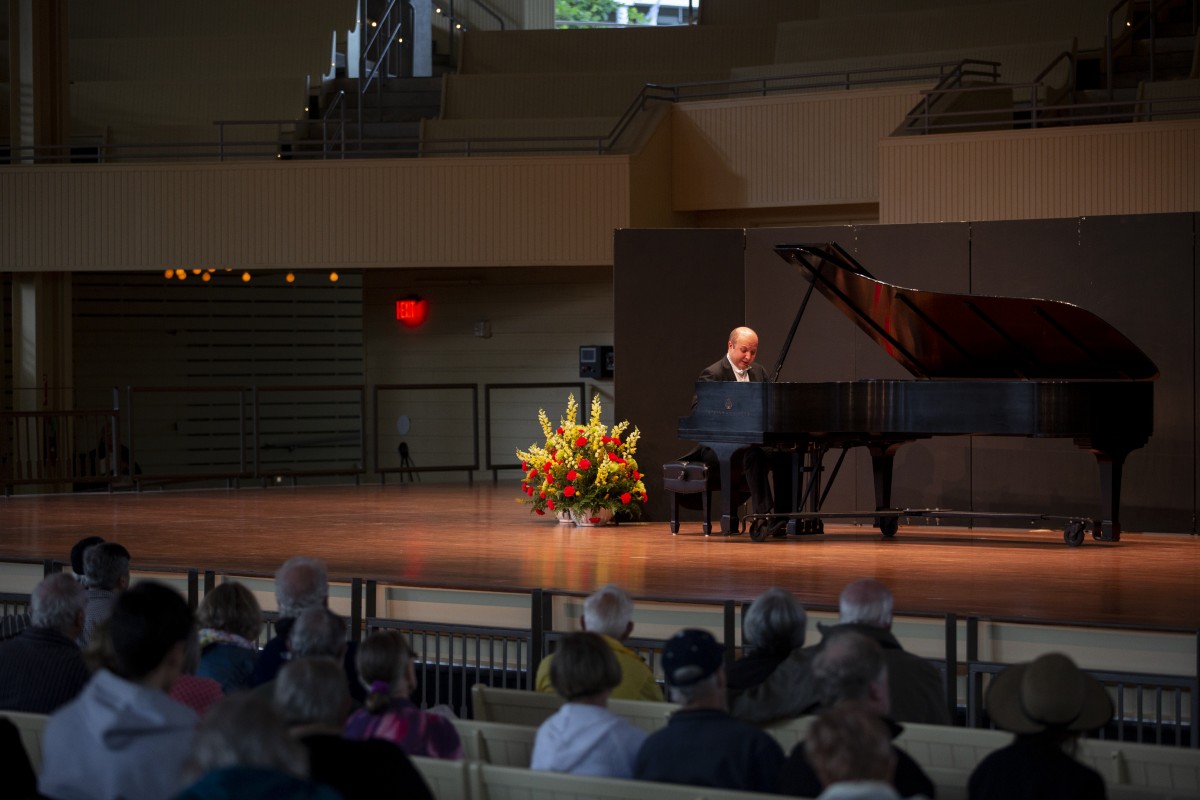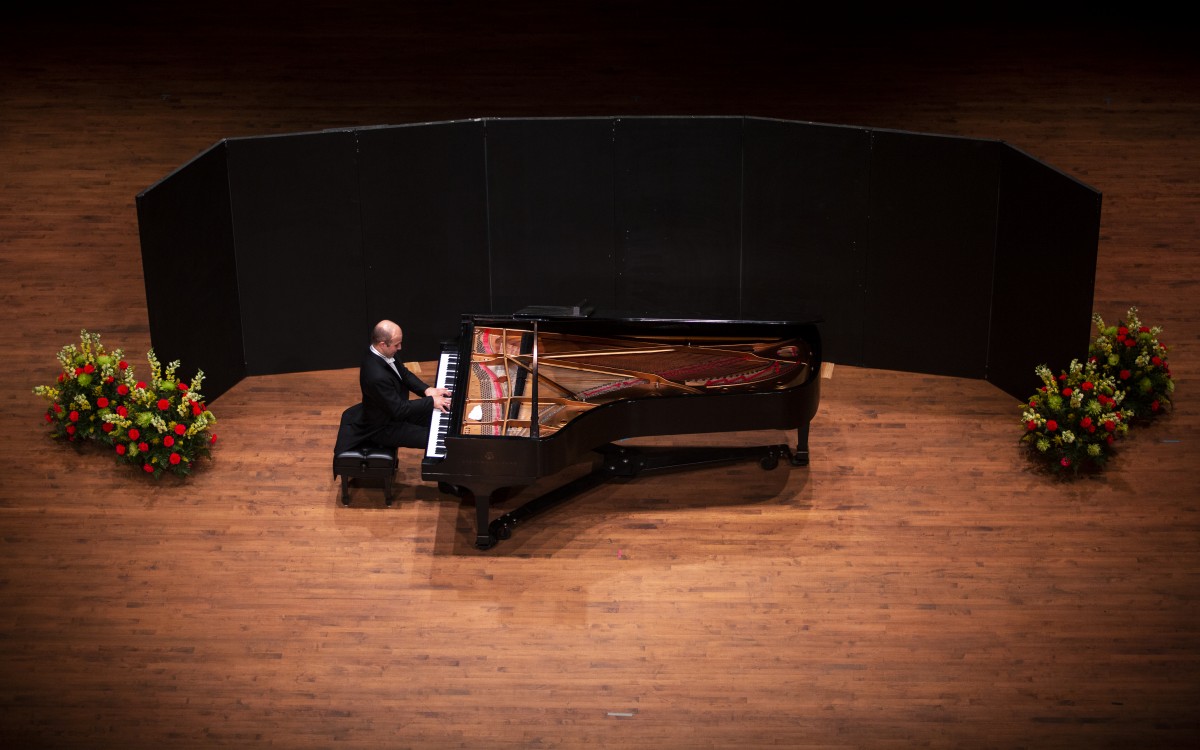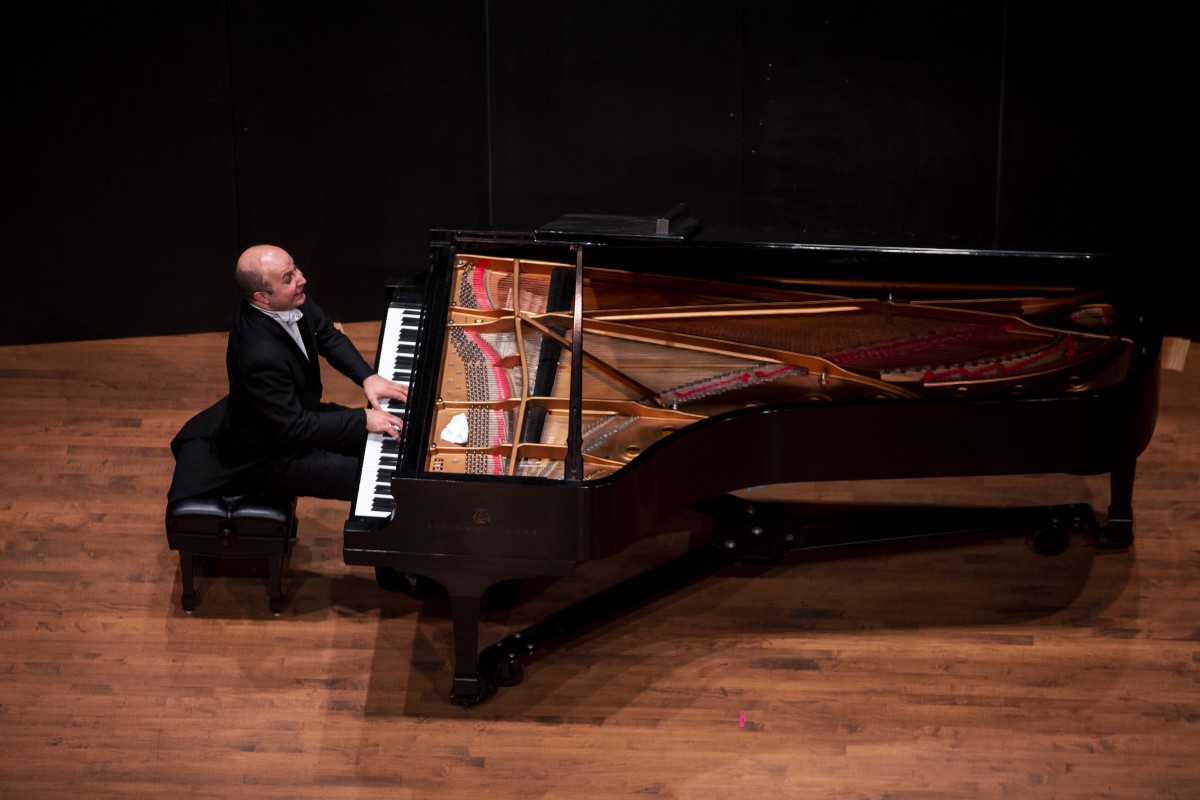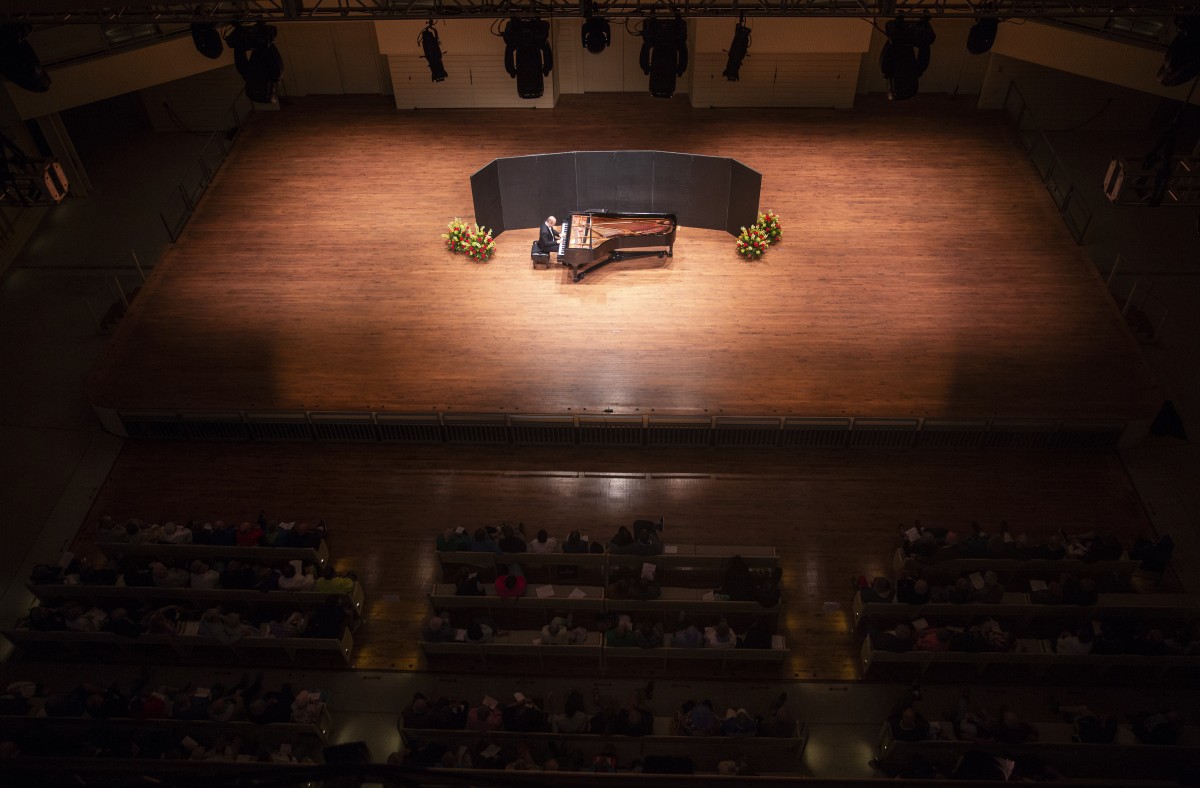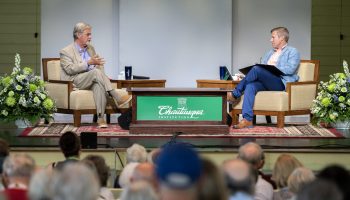Ascribing one’s own meaning to music is dicey stuff. If songs can be misunderstood (see Bruce Springsteen’s “Born in the U.S.A.” and a certain re-election campaign), imagine how easily it is to misconstrue instrumental music, especially with classical music’s custom of using generic titles (see Shostakovich’s Symphony No. 5 and a certain dictator). The songwriter and composer’s intentions should take precedence, right?
Not necessarily. A recital by pianist Alexander Gavrylyuk Monday night in the Amphitheater showed just how powerful a reimagining can be. By writing in the concert notes that he picked the compositions to represent “human life in different stages of maturity,” he made clear he wasn’t saying Bach, Chopin, Liszt, Rachmaninoff and Prokofiev had actually meant this. I focus on this because programming like this is not attempted often. Is it fear of being seen as appropriating others’ work, being anachronistic or simply seeming ignorant of history? Whatever the reason, it is a shame because the structure, length and art of classical music are particularly suited for it.
Gavrylyuk’s tracing of human growth began with a deft pick: Bach’s Italian Concerto. Its sunny first and rambunctious final movements personified the brightness of a new life; the pianist’s doleful interpretation of the second movement foreshadowed the pain inherent in the human condition. 19th-century rubato and mercurial dynamics in Bach? In this context, it was appropriate and compelling. And he was playing on a Steinway, after all.
Recasting Chopin’s Ballade No. 2 in F major as adolescence was another programming masterstroke. Gavrylyuk rendered it so by contrasting playfulness and romance with uncertainty and melancholy. His pick to represent the slap of the real world was Liszt’s “Dante” Sonata from “Annees de pelerinage.” Gavrylyuk chose it to capture the loss of innocence, but to me it portrayed that thin line between confidence and bombast of young adults. As is often the case for Liszt’s piano works, it is scintillating, but exaggerated and showy rather than substantive. However, Gavrylyuk shook the piano with bracing force and astonishing runs needing no overarching program to appreciate.
Four Rachmaninoff preludes had Gavrylyuk adeptly contrasting life’s fleeting bliss amid incessant struggles. The latter came with the martial push of Prelude No. 5 from op. 23 for which he rounded the edges, lending it more a matter of self-criticism instead of a forced march.
The final piece was a bit of a surprise ending. It explored death, as was to be expected, but not a peaceful or even natural passing. Prokofiev’s Piano Sonata No. 7, composed in the Soviet Union during World War II, is an almost violent work, rife with obsessive motifs and angry dissonance, which Gavrylyuk struck with incredible virtuosity and fury. It’s certainly not a comforting piece, so here I must disagree with Gavrylyuk who views its third and final movement as “leaving us with hope to never repeat such historical mistakes.” It was, to me, a stark reminder that brutality remains to be overcome.
Guest critic Andrew Druckenbrod is a lecturer in the Department of Music at the University of Pittsburgh and the former classical music critic of the Pittsburgh Post-Gazette.



